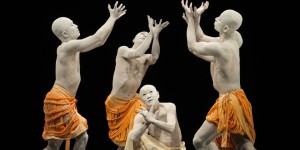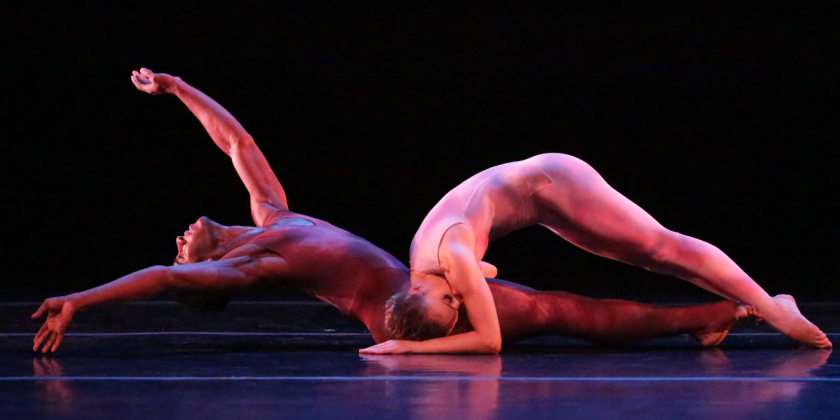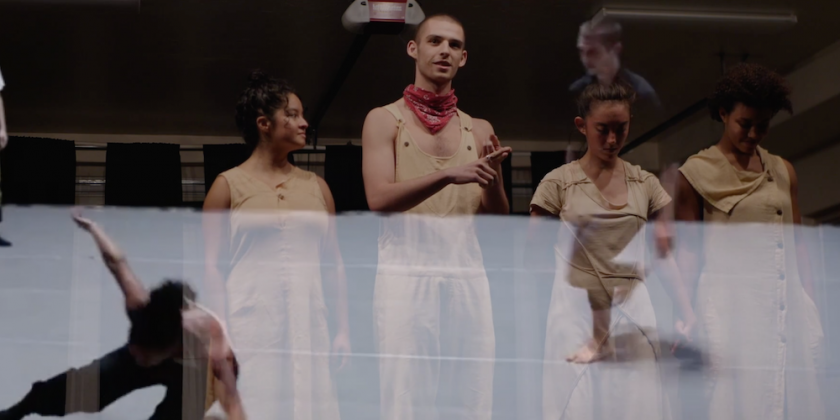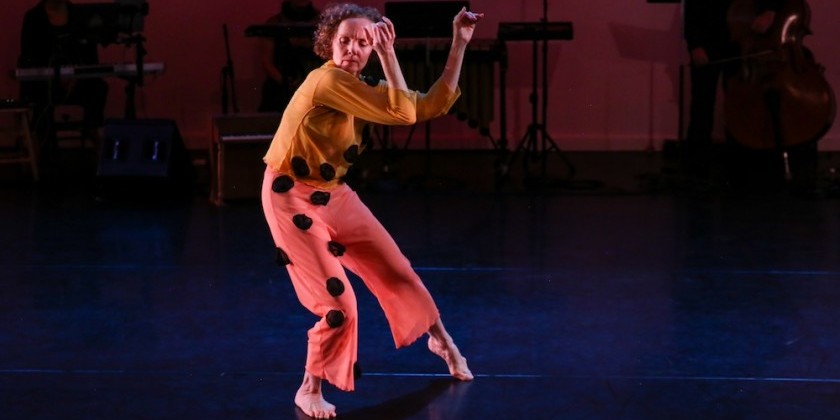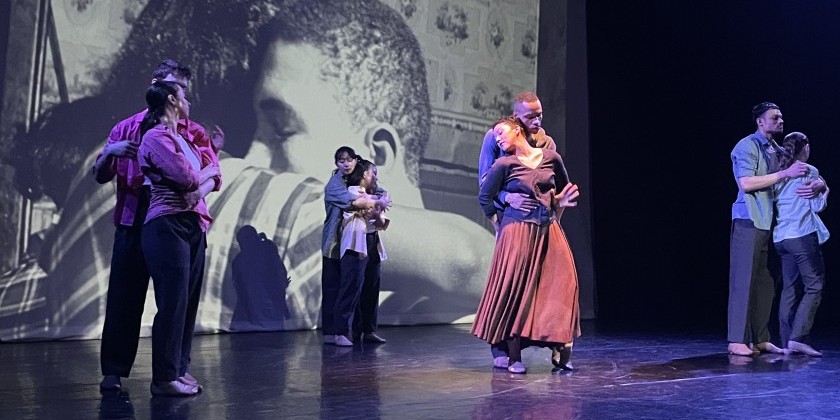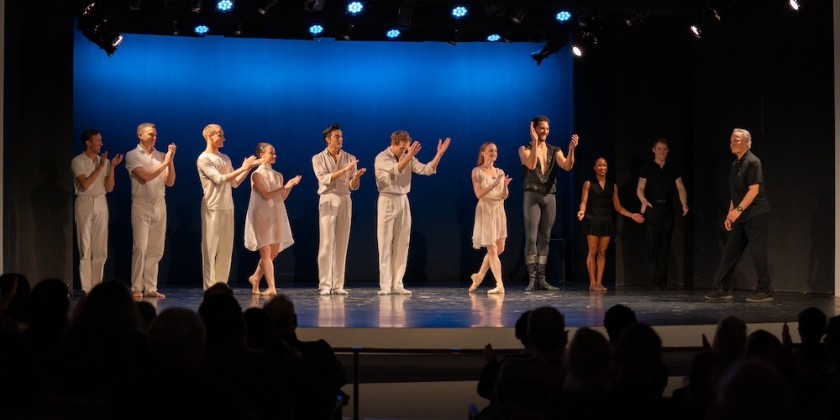Impressions of: Sankai Juku: "Umusuna: Memories Before History"
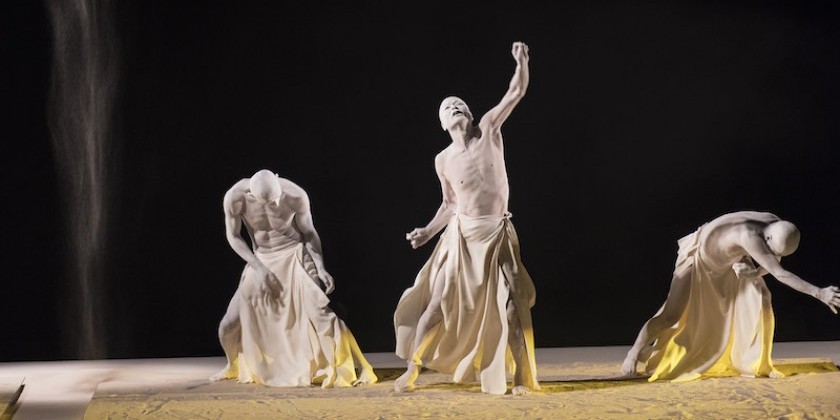
Venue: BAM Howard Gilman Opera House
October 31, 2015
Choreographer/Founder: Ushio Amagatsu
Dancers: Semimaru, Sho Takeuchi, Akihito Ichihara, Ichiro Hawegawa, Dai Matsuoka, Norihito Ishii, Shunsuke Momoke
Costume realization by Masayo Liduka
Music by Takeshi Kako, Yas-Kaz, Yoichiro Yoshikawa
Lighting by Genta Imamura
Halloween seemed to be a perfect night to see Sankai Juku, based on fond memories of their first mind-blowing, otherworldly appearance at City Center in 1984. Anna Kisselgoff wrote back then in the New York Times about their production of Kinkan Shonen, “ Like all groups that are part of the anti-Establishment dance movement called Butoh in Japan, Sankai Juku has a strong preoccupation with grotesque, distorted and deformed bodies.”
Thirty years later, Sankai Juku appears as elegant holy men, intent on inspiring us to imagine peace, breathing as one. With hands, and later arms, frequently curved upward, the bald, toned, powdered-white dancers maintain contemplative composure. They glide, rock in fetal poses, and curl into yoga child positions. Gone is the incredibly slow pace and the sensationalism (such as their famous naked descent, performed both inside theaters and outside buildings, until one dancer fell to his death in Seattle in 1985). The beauty of barely noticeable change is represented by two enormous scales hung from the ceiling, which seesaw on opposite sides of the stage until aligning in the last section of the program. Imagine an extremist who abandons the fringe for a centrist philosophy.
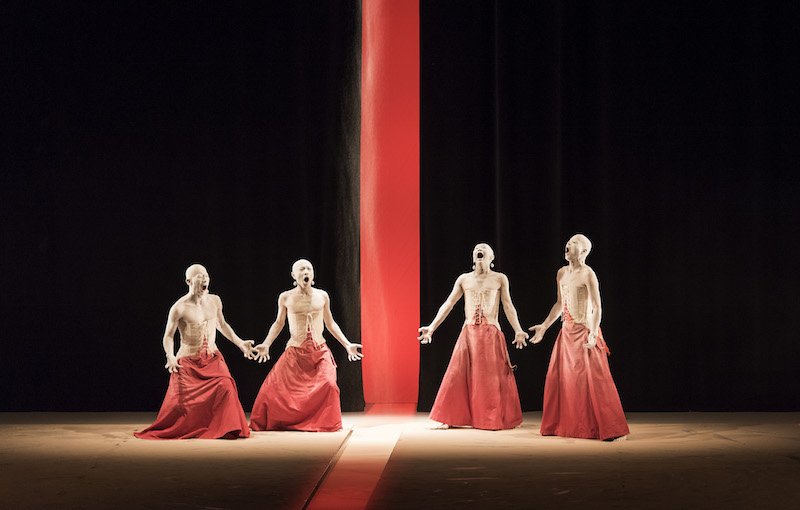
Balance and vulnerability underscore this production, which is divided into seven parts: Atokata: Imprints; All that is born; Memories from water; Inwinds blown to the far distance; Mirror of forests; Sedimentation and erosion, ad infinitum; Ubusu. Ubusu is translated in the program as “birth, the beginning of life, or entering the world.” The sections alternate between solos, trios and quartets, until the company performs together for Ubusu. In the first solo, one man faces the sand as one might gaze at a Buddha or a waterfall. In the first quartet, the men sail around each other like regal court dancers in corsets and red dresses. In another, the dancers hold an asymmetrical squat while pointing one finger.
For the bow with the company, 64 year old company founder Amagatsu curved his torso as he waved his arm, with an expression of wonder, while his dancers remained still. The BAM audience all jumped to their feet in rapturous applause.
Share Your Audience Review. Your Words Are Valuable to Dance.
Are you going to see this show, or have you seen it? Share "your" review here on The Dance Enthusiast. Your words are valuable. They help artists, educate audiences, and support the dance field in general. There is no need to be a professional critic. Just click through to our Audience Review Section and you will have the option to write free-form, or answer our helpful Enthusiast Review Questionnaire, or if you feel creative, even write a haiku review. So join the conversation.






